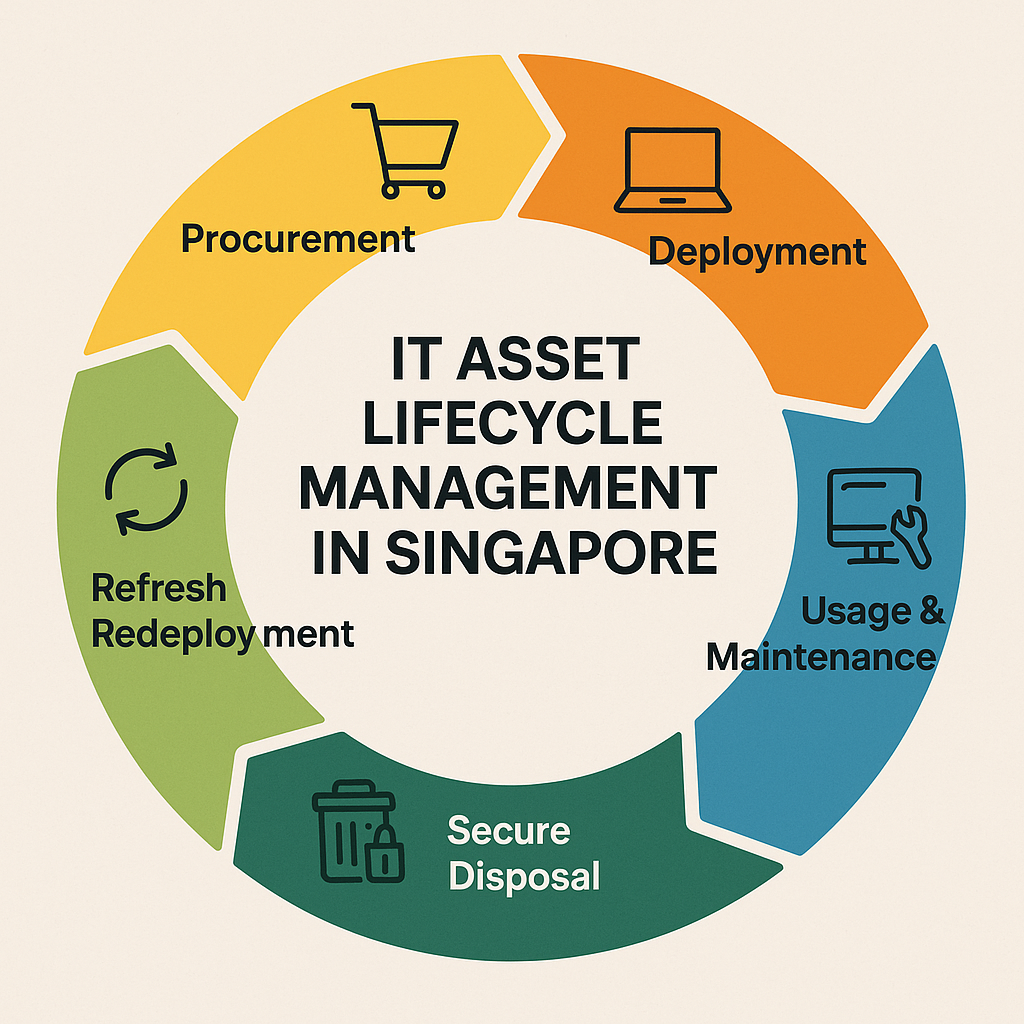Managing IT assets effectively is critical for businesses in Singapore, where compliance, data security, and sustainability are all top priorities. IT asset lifecycle management refers to overseeing technology equipment, from procurement and deployment to maintenance and final disposal, in a way that maximizes value, reduces risks, and ensures compliance with regulations like Singapore’s Personal Data Protection Act (PDPA).
Procurement: Choosing the Right IT Assets
The lifecycle begins with careful selection and purchasing of IT equipment. In Singapore’s fast-moving business environment, companies often refresh laptops, desktops, servers, and networking devices every 3–5 years.
-
Vendor selection: Partnering with authorized resellers ensures warranty support and access to enterprise-grade devices.
-
Cost vs. scalability: Businesses should balance upfront cost with long-term performance, factoring in scalability for future growth.
-
Sustainability: Singapore companies are increasingly adopting green procurement policies to reduce environmental impact, aligning with government pushes for sustainability.
Deployment: Secure Set-Up
Once purchased, IT assets need to be deployed correctly to ensure security and productivity.
-
Asset tagging and inventory management: Barcode or RFID systems help track devices from day one.
-
Configuration and security policies: Standardizing software installation, encryption, and endpoint protection is essential.
-
User allocation: Assigning devices to employees with clear responsibility improves accountability and prevents asset loss.
Usage & Maintenance: Extending Asset Value
During daily operations, IT assets must be maintained to ensure reliability and compliance.
Considerations for Singapore businesses:
-
Regular patching and updates: Protects against cybersecurity threats.
-
Performance monitoring: Helps decide whether to upgrade or repair.
-
Compliance logging: Keeping records of maintenance activities supports audits, especially for industries like finance, healthcare, and government-linked organizations.
Refresh & Redeployment: Maximizing ROI
When assets age, companies can either redeploy them internally or upgrade strategically.
Options include:
-
Redeployment within departments: Older devices may be suitable for non-critical tasks.
-
Leasing and buy-back programs: Many Singapore vendors offer trade-in rebates for old equipment.
-
Hybrid refresh cycles: Mixing new purchases with refurbished devices can reduce costs.
Secure Disposal: Protecting Data and the Environment
This is the most critical stage for Singapore businesses, especially with PDPA enforcement and rising sustainability goals. Improper disposal of IT assets can lead to data breaches, non-compliance fines, and reputational risks.
-
Certified data erasure: Using certified data wiping to ensure data is permanently erased.
-
Physical destruction: Hard drive shredding or degaussing for highly sensitive data.
-
E-waste recycling: Partnering with NEA-licensed e-waste recyclers helps ensure compliance with Singapore’s recycling guidelines for e-wastes.
-
Audit trail and certification: Always request a Certificate of Data Destruction to demonstrate compliance.
Why IT Asset Lifecycle Management Matters in Singapore
Implementing strong IT asset lifecycle management brings multiple benefits:
-
Regulatory compliance: Avoid PDPA fines and meet industry-specific requirements.
-
Cost efficiency: Maximize return on IT investments and reduce unnecessary purchases.
-
Sustainability: Contribute to Singapore’s green initiatives and corporate ESG goals.
-
Risk management: Minimize cybersecurity and data leakage risks at every stage.
Partnering with a Trusted IT Asset Lifecycle Management Provider
Most companies in Singapore outsource parts of the lifecycle, particularly secure IT asset disposal to specialist providers. A reliable partner can:
-
Conduct secure on-site collection and destruction
-
Provide full audit trails and compliance certificates
-
Offer buy-back value for remarketable assets
-
Ensure environmentally responsible recycling
IT asset lifecycle management in Singapore is more than just tracking laptops and servers. It’s about optimizing value, securing sensitive data, and staying compliant in a regulated environment. From procurement to secure disposal, businesses that adopt a structured IT asset management approach gain better control, reduce risks, and achieve long-term sustainability.

